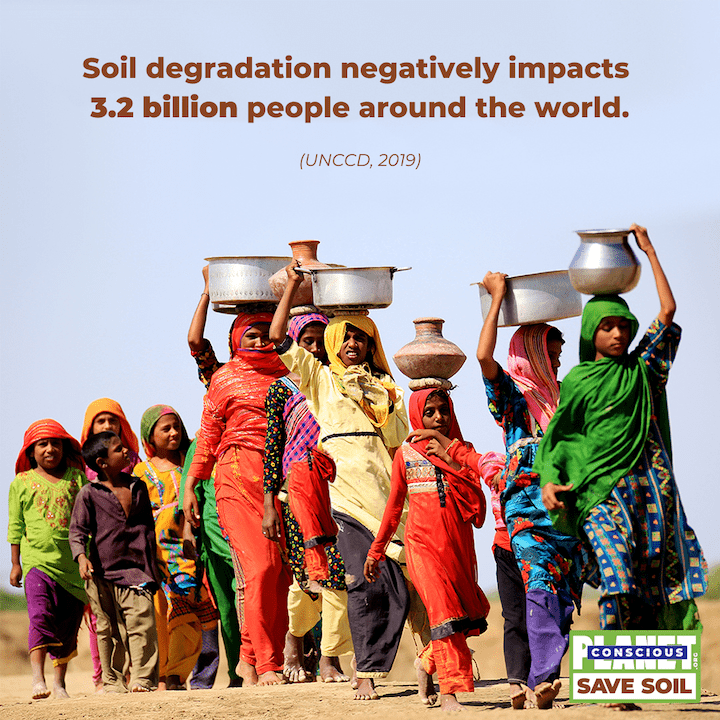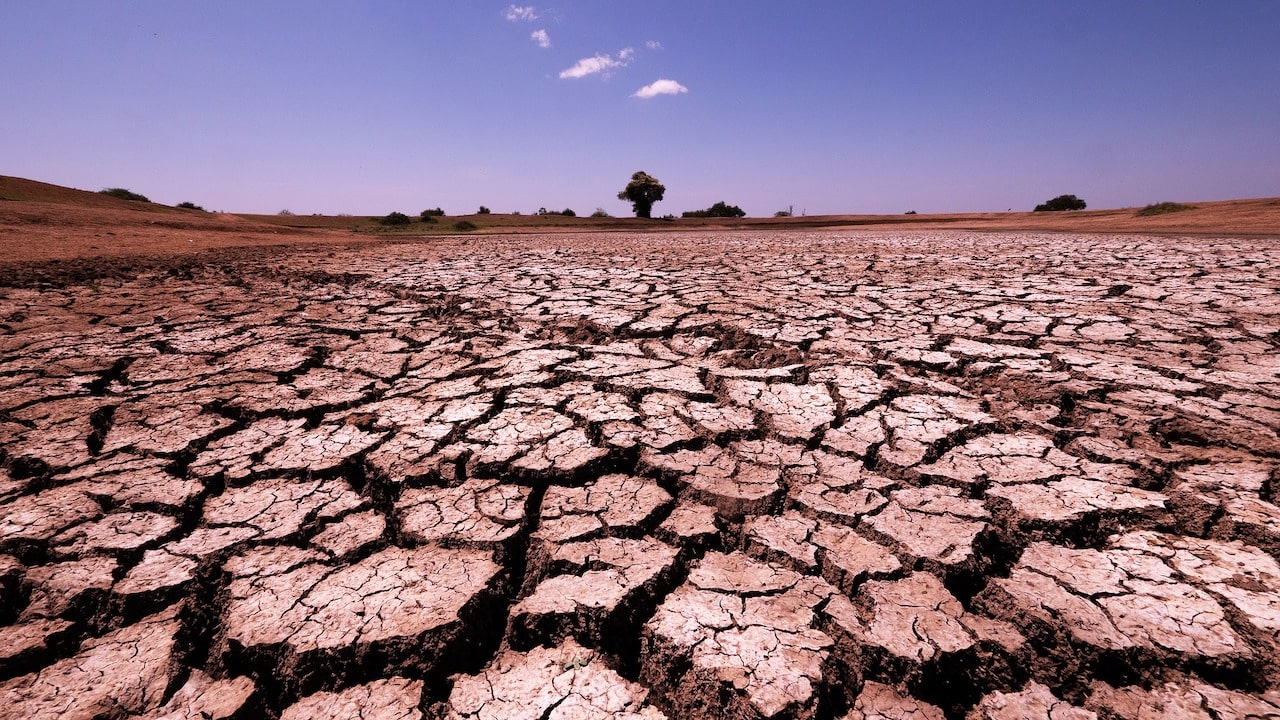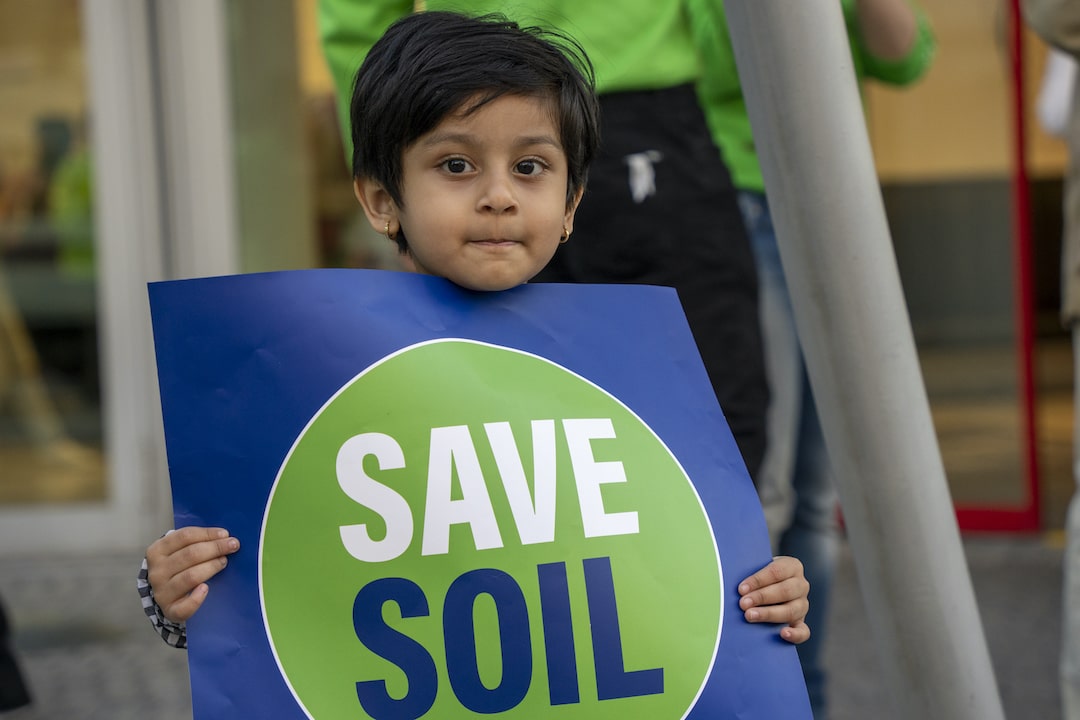
“This is about turning a whole generation back from the brink. Let’s make this happen.” – Sadhguru
On March 21, 2022, 65 years old Spiritual Guru Jaggi Vasudev (Sadhguru) embarked on a 30,000 km long motorcycle rally passing through 26 nations, starting from London in the UK and ending in south India. With this journey, Sadhguru wants to raise public awareness about the need to prevent our farmlands from very rapid desertification. In this article, we highlight what is at stake and why Sadhguru undertakes this risky road trip to increase public awareness of the need for an urgent solution to this problem.
A living (or fertile) topsoil is sufficiently rich in biodiversity and organic content. Scientists agree that a handful of healthy soil has a minimum of 3% organic content and over 10 billion microbes and creatures such as earthworms, mites, and ants. All of this (and more) constitutes the biodiversity of topsoil that acts as a natural recycling factory, converting biowaste into raw material for all other life forms, including humans.
In a very simplistic sense, life on Earth depends on two primary resources, viz., amino acids and glucose. Amino acids are building blocks of living cells, while glucose is the fuel that powers them. Most species obtain these nutrients by consuming other life forms as food. The essential ingredients of these compounds, such as carbon, oxygen, or nitrogen, are circulated in our ecosystem in very stable cycles, powered by solar energy. Any disruption of these nutrient cycles may trigger mass extinction of life from this planet as we know it, including humans. Having sufficiently rich topsoil in abundance in farm and non-farm lands is key for maintaining sustainable cycles of amino acids and glucose production and in plain language sustainable food production.
Many school textbooks have a somewhat pernicious depiction of food chains with plants at the bottom and apex predators at the top. Although this is nothing more than an accepted convention, it often leads young minds to subconsciously view life as a hierarchy of domination rather than significance, turning plants merely into commodities. This is a fundamental flaw in perspective because, in reality, plants are the only producers of food (and oxygen) on our planet. They turn raw materials like soil manure, carbon dioxide and sunlight into food and oxygen. We call this process photosynthesis. All animals in any food chain and human beings are fully dependent on nutrition that flows out of photosynthesis. Perhaps it is time that we should consider reversing this convention and start placing plants at the top of the food chain.
You may wonder, “why should we be concerned?” The answer is that over 65% of the world’s agricultural land is no longer at optimum fertility. Most farmlands are about to lose their fertility in the next 25-40 years, which will cause large-scale global famines. There is less than 0.3% organic content left in large parts of Africa and less than 0.5% in various parts of India. Other places have similar stories to share. As per recent studies conducted by UN agencies, one acre of topsoil gets depleted every second, on average (Source). Soil formation (or pedogenesis), on the other hand, is a prolonged process. Just about three centimetres of topsoil formation may take up to a thousand years (Source). If we act today, we can turn this around in the next few decades; otherwise, it will take hundreds of years to reverse the damage.

A technology enthusiast may ask, “Can we not use fertilizers to reverse this trend?’ Fertilizers are not a lasting solution. Soil cannot attain natural fertility only by adding chemical compounds and minerals to it because soil microbes have a crucial role in nutrient intake as well. Microbes promote the exchange of minerals between the soil and the roots of plants and trees, and plants reward those organisms in their soil with photosynthesized glucose. The dry leaves from trees and animal waste replenish the lost organic content of the soil. This natural cycle thus goes on and on. On the other hand, excessive use of fertilizers (and pesticides) destroys the soil’s biodiversity and reduces microorganism soil density. This, in turn, lowers the nutritional value of crops and fruits. Moreover, chemicals present in fertilizers frequently find their way to nearby water bodies and create dead zones for marine life.

The next obvious question is, “So what can I do? I am not a farmer”. On March 29, 2022, the UN’s meetings on a global biodiversity framework in Geneva with around 1000 negotiators from 164 countries ended without much progress. The goal of these meetings was to establish an international consensus for taking practical measures to reverse nature loss and protect vulnerable species. One such measure is to reserve 30% of every country’s land as conserved areas by 2030. As many as 21 other essential targets, such as reducing pesticide use were not formally agreed upon. (Source)
Regulators and lawmakers do not understand the urgency of this proposition, perhaps because they are unsure of having people’s mandate for such policies. What we need to do right now is to raise awareness and make the electorate realize how crucial it is to maintain the biodiversity of topsoil. As with climate change, this problem will become part of the public debate and eventually lead to new, more soil-friendly agricultural policies that will rejuvenate farmlands. The journey of Sadhguru is an attempt to raise awareness among people across different parts of the world NOW. Strong public opinion in favour of urgent action can push governments to adopt and implement policies targeting soil rejuvenation swiftly. It is our turn to lend our voice of support to this movement. Let’s make it happen.

#SaveSoil website: https://consciousplanet.org/
(*The views expressed are personal and do not necessarily represent the views of the Isha foundation)





























